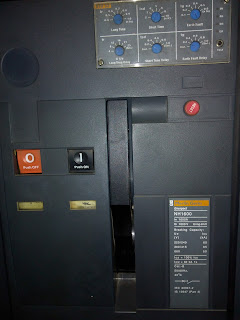HIGHER EFFICIENCY MOTORS (HEM)
Super premium Efficiency (IE4) motors
The higher price of the IE4 motors is due to :
1. the use of high-quality materials and optimization of assembly and design of these motors to achieve higher efficiencies upto 97%.
2. Large-diameter copper wires and more quantity of aluminum are used in rotors of these motors to reduce the resistance losses.
3. An optimized cooling fan is also used to reduce the winding losses.
4. use of advanced technologies like diecast copper rotors enables achieving higher efficiencies in the same frame size.
The use of the high-quality, expensive materials increases the overall cost of this type of motors.
adoption of energy efficient technologies to reduce their energy consumption and carbon emission.
5. Stator and Rotor I2R losses: Stator and Rotor I²R losses appear when heat is generated by resistance from current flowing in the stator windings, rotor conductor bars. These are major losses, typically account for 55% to 60% of total losses.
Core losses: It has hysterisis and eddy current effects. These are independent of load and account for 20 to 25% of total losses.
6. Efficiency is improved by the use of thinner gauge,
7. lower loss core steel reduces eddy current loss.
8. Motor operation closer to synchronous speed will reduce rotor I²R losses.
9. Efficiency can be improved by using more copper and large conductors, increasing cross sectional area of conductor by winding techniques lowers resistance and losses due to current flow.
10. Efficiency is improved by the use of longer core steel to design, reduces core losses due to lower operating flux densities
11. Magnetic losses can be reduced by using better magnetic steel .
• Higher efficiencies are achieved by redesign of motors as follows:
1.Low loss of thinner lamination's reduce the Iron losses even at partial loads.
2.Thicker conductors and more copper contents reduce copper losses due to lower resistance.
3. Longer core length, uniform air gap between stator and rotor reduce stray losses.
4. Special design of fan reduce windage losses.
5. An energy efficient motor results in lower energy costs when compared to a rewound standard-efficiency motor.
average life of the motors increase with the increase in size of the motors of different ratings.
Energy efficient motors require less maintenance and have longer life because of lower motor operating temperatures
Higher efficiency motors (HEMs or EEMs) are preferred than that of standard efficiency motors, because increased efficiency saves significant amount of energy consumed and therefore saves energy bill, costs incurred over maintenance of the standard motor .Over 70% of all electrical energy consumed in industries is used by the motors, hence improving the efficiency of motors can save energy & lower the operating cost, which is more than its purchase cost.
Switch to IE3 or IE 4 motors.
- Wrong selection of motor applications causes failure of motor.
- Motor life is (12 - 20) years as per IEC STANDARDS .
- Average load factor on industries is 50 percent , 60 % to 90 % LF has high efficiency.
NOTE :- The efficiency of a motor is at its greatest when it runs between 60% and 80% of rated power. The motor will become gradually less efficient as the load is lowered, and will become significantly less efficient when operating at a load below 35–40%. By replacing inefficient motors with more appropriately sized motors, the total energy consumption of a plant could be significantly reduced.







Comments
Post a Comment